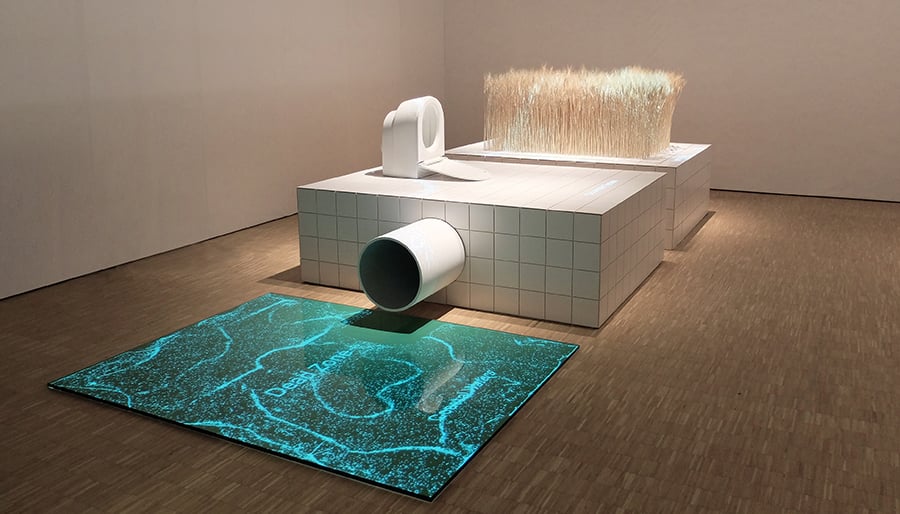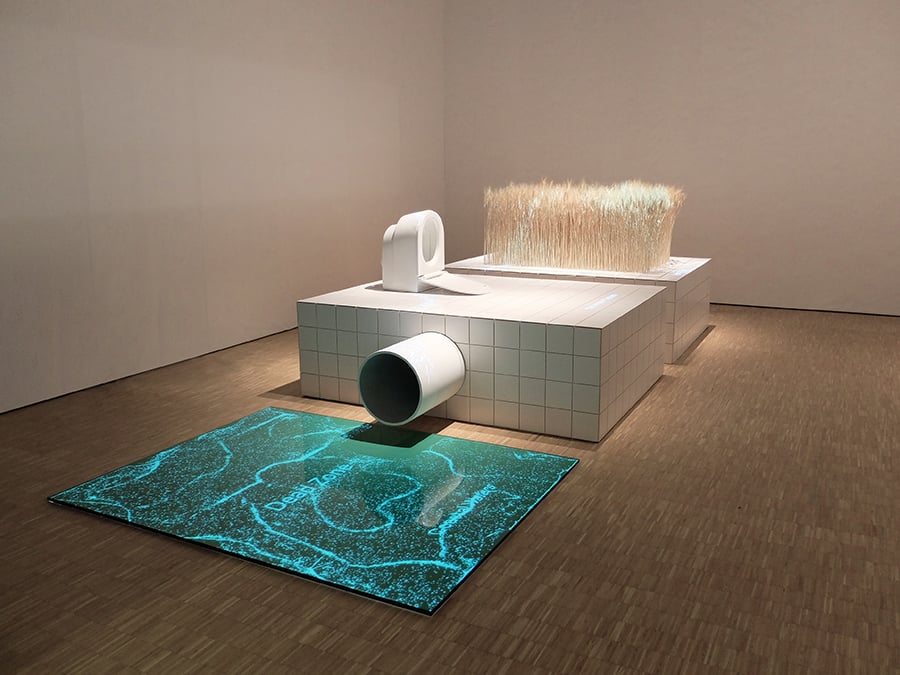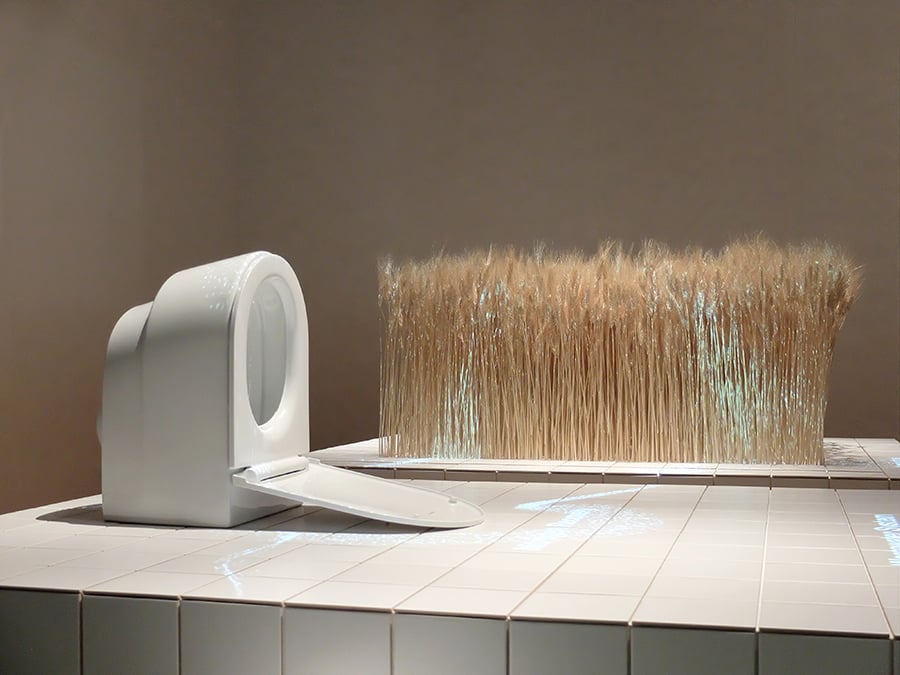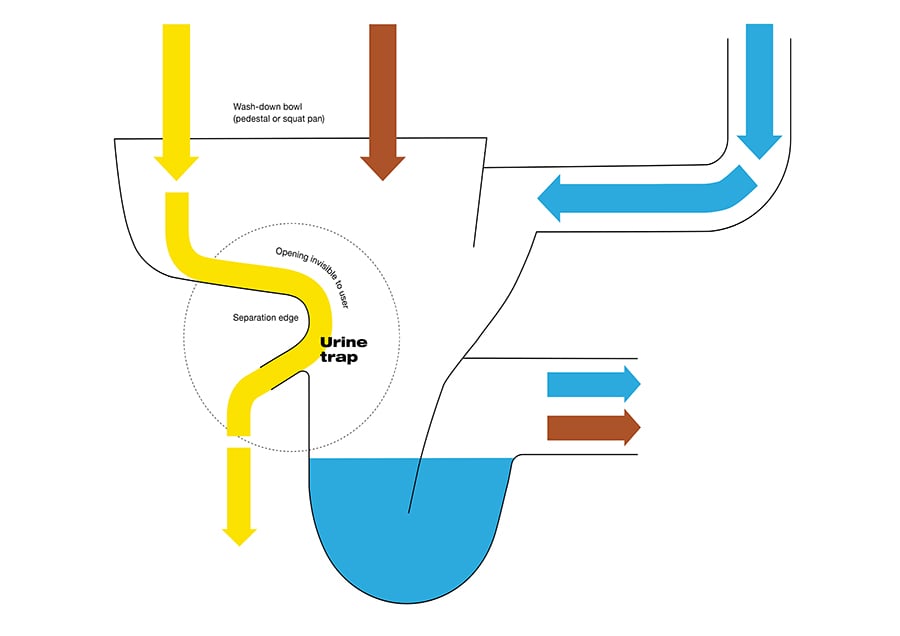
August 27, 2019
The Toilet That Dreams of Saving the World
Save!, designed by Austrian firm EOOS for Laufen, aims to upend how we process human waste and heal the environment in the process.

Swiss bathroom brand Laufen’s new toilet is a bit unusual. Beyond being a handsome fixture, it promises to make the bathroom more sustainable by separating urine from the wastewater. This seemingly simple act could create an alternative to energy-intensive fertilizer production and reduce pollution in our waterways and oceans. Just as impressive is that Austrian design firm EOOS devised a simple, non-mechanical apparatus that performs the separation without the user even knowing it.
How is urine connected to fertilizer and pollution? The answer lies in two elements: phosphorus and nitrogen, both of which are abundant in urine. These two minerals are essential nutrients for plants (and therefore used extensively in fertilizer) but are not extracted at sewage treatment plants. This means that phosphorus and nitrogen subsequently get pumped into rivers, oceans, and lakes, where they contribute to algal blooms, hypoxia, and dead zones incompatible with marine life. While agricultural fertilizer runoff is a major contributor to such dead zones, the U.S. Geological Survey estimates that 7 percent of total nitrogen and 13 percent of total phosphorus pollution in the Gulf of Mexico comes from wastewater treatment plants.
Those numbers also represent a missed opportunity. Each year Americans flush away enough nutrients to replace about nine billion pounds of chemical fertilizer, according to estimates from The Rich Earth Institute, a Vermont-based organization dedicated to recycling human urine as fertilizer. (The Institute’s more memorable statistic is that each day, an adult flushes away enough phosphorus and nitrogen to grow a bread loaf’s worth of wheat.) The process of converting urine to fertilizer is straightforward and typically involves treatment and distillation stages. In contrast, conventional fertilizer production is energy-intensive and polluting.

The journey to create the Save! toilet began in 2011, when EOOS joined the Bill and Melinda Gates Foundation’s “Reinvented Toilet Challenge,” which sought to address global sanitation crises with sustainable solutions. EOOS managing partner Harald Gruendl saw a major opening for design to make a positive social and environmental impact. “Everyone speaks about circularity and the circular economy,” he tells Metropolis. “Recycling nutrients is the most basic form of circularity there is.”
Working with the Swiss Federal Institute of Aquatic Science and Technology, EOOS aimed to build a toilet that could perform urine-feces separation, sending the liquid waste into its own storage and treatment system. The solution was a radically simple one—a urine trap, wherein urine hits a gently-angled pan at the front of the toilet, then trickles into a small opening inside the base. Urine—and only urine—enters the trap thanks to the Teapot Effect: Faster-moving flush water (which might contain feces) cascades over the trap and into the regular drain below. (The Teapot Effect is so named because when tea is poured slowly, the liquid tends to dribble down the spout, but a fast pour forms an arcing stream.) The only catch is that all urine must first hit the pan—meaning men must always sit down to use the toilet.

When Laufen saw the design EOOS had developed for the Gates Foundation, it piqued their interest. Such new technology might appeal to high-end clients and early adopters passionate about sustainability—think Tesla, but for toilets. The collaboration took a little over a year to devise a product that met E.U. plumbing standards and looked at home in the Laufen catalog. “The brief was to make a toilet design that looks like a ‘normal’ modern toilet [that’s] producible at ‘normal’ costs,” says Marc Viardot, managing director and director of marketing and products at Laufen. This year, Save! won praise at at the massive plumbing trade show ISH in Frankfurt, as well as the Milan Triennale, where it played into the show’s theme of “Broken Nature.”
However, Save! is just the start. “Once you have a product you need an application,” says Gruendl, who explains that urine separation must be widely implemented at a system-wide level to be truly effective. Cities would have to install separate infrastructure to collect and treat urine; a more likely short-term scenario is that buildings would collect and store the urine until a tanker truck picks it up, not unlike a special recycling service.
Still, having an effective and simple solution to kickstart the discussion is essential. “[Bjarke Ingels Group partner] Kai-Uwe Bergmann was one of the first architects I told about this technology,” says Viardot. “It didn’t take too long for him to be enthusiastic about it and see how we could implement the Save! toilet.” (BIG’s New York office hosted an event showcasing the design this past May.) Both Viardot and Gruendl are hopeful that cutting-edge design firms like BIG and environmentally-minded consumers will be the toilet’s early adopters.
You may also enjoy “This Minimalist Public Pool Creates Its Own Water-Filtering Ecosystem.”
Would you like to comment on this article? Send your thoughts to: [email protected]







